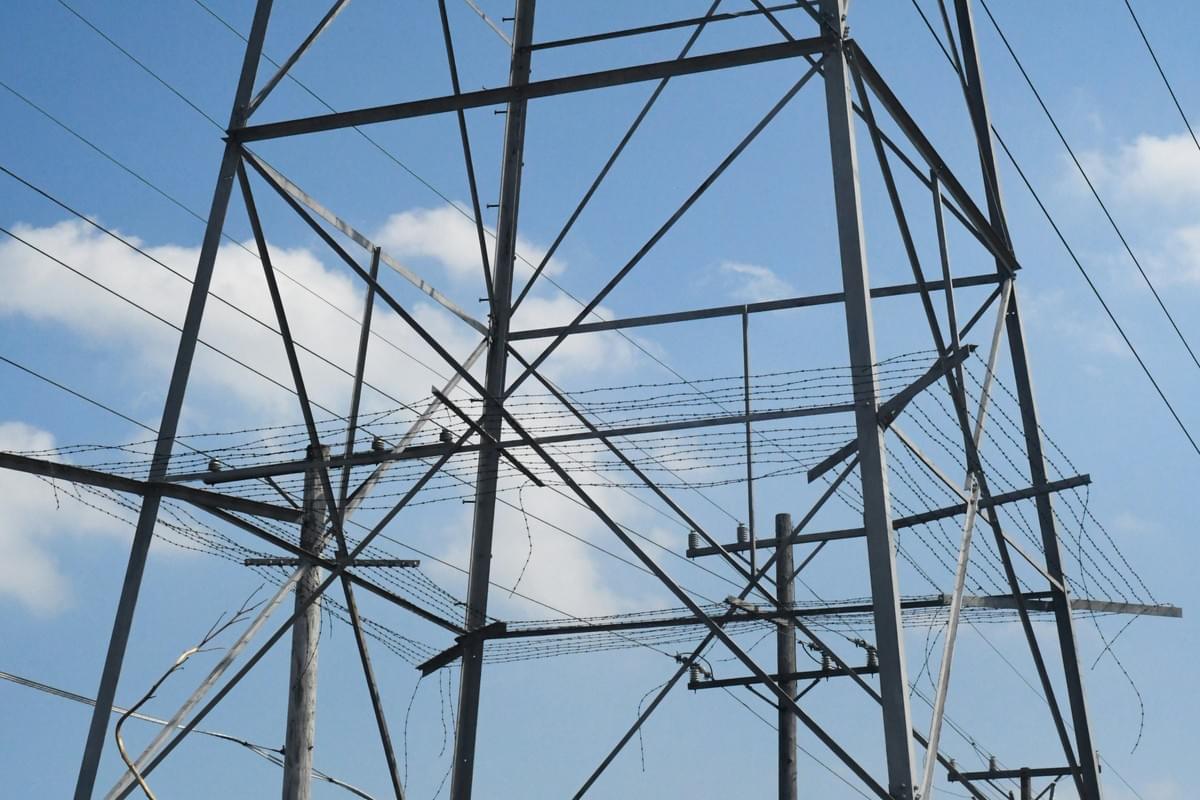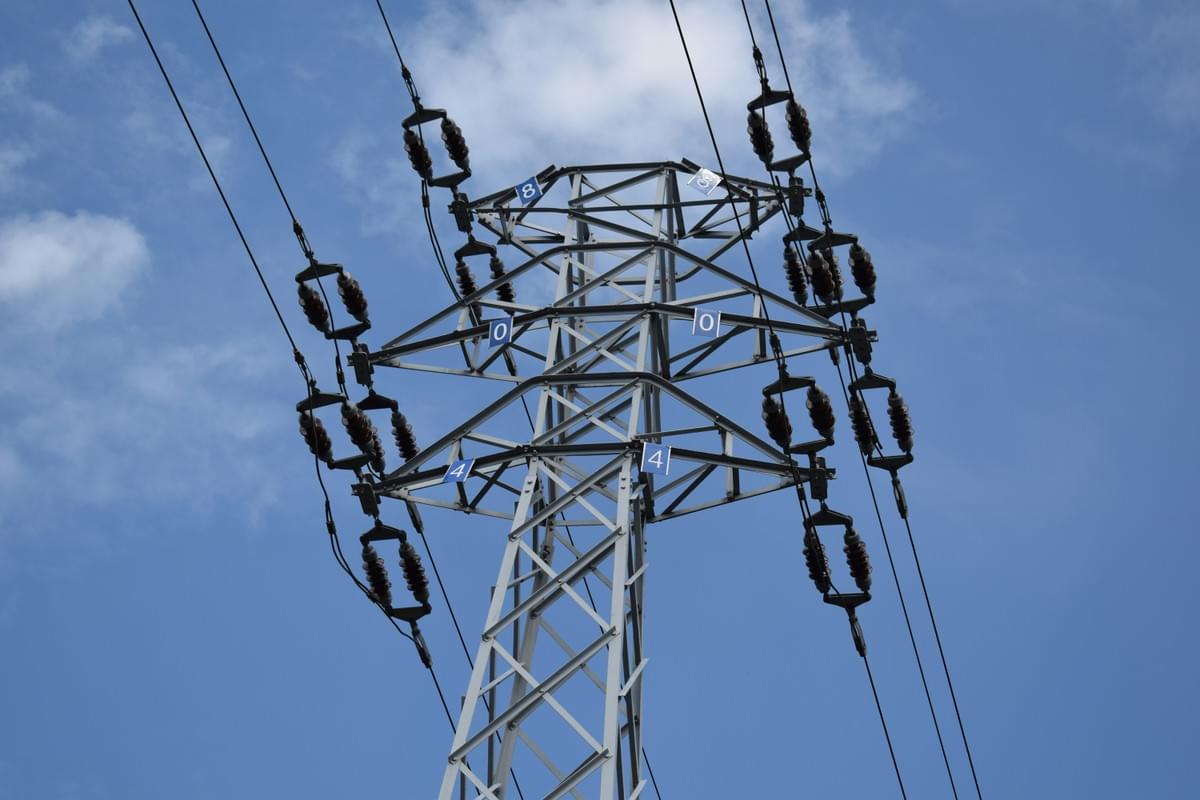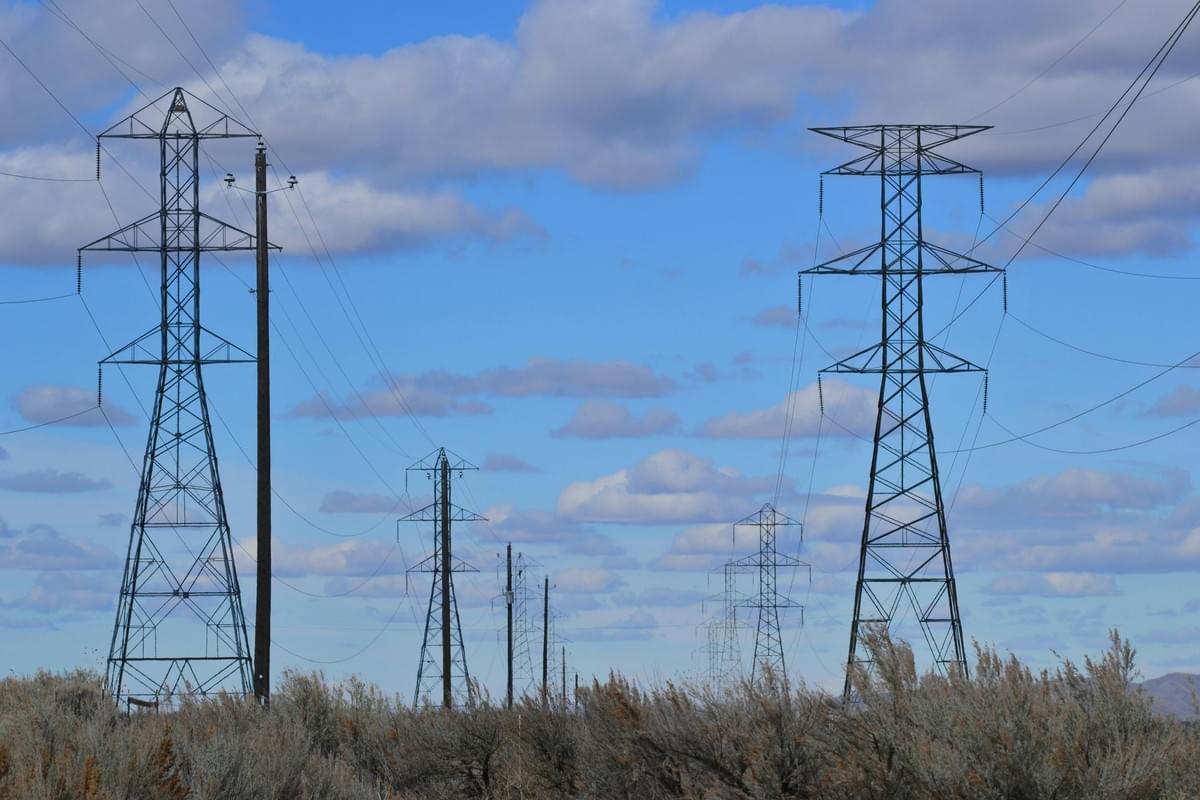Introduction
Understanding Davit Arms
So, what exactly is a davit arm? In essence, it's a device designed to lift and support equipment safely and efficiently. Whether you're involved in utility maintenance or construction projects, knowing what a davit arm is used for can enhance your operational capabilities and safety measures.
Importance of Utility Poles
Utility poles are the backbone of our electrical and communication networks, providing essential support for power lines and other equipment. Their structural integrity relies heavily on components like davit arms, which help maintain stability during installation and maintenance tasks. By understanding the relationship between utility poles and davit arms, you can appreciate their combined importance in keeping our infrastructure running smoothly.
Purpose of This Buying Guide
This buying guide aims to demystify the world of davit arms by exploring their types, uses, securing methods, and materials involved in transmission lines. You'll find answers to questions like What are the different types of davit arms? and What is a davit arm for rope access? Our goal is to equip you with valuable insights that will assist you in selecting the right products for your needs while ensuring safety and efficiency.
What is a Davit Arm?

Davit arms are essential tools in various industries, particularly for utility services and maintenance operations. They serve as support structures that can elevate equipment or personnel safely and efficiently. Understanding the definition, key components, and applications of a davit arm is crucial for anyone considering its use.
Definition and Function
A davit arm is a type of lifting device that consists of a beam or arm mounted on a vertical post or base, allowing it to pivot at an angle. Its primary function is to provide support for lifting loads, whether that's personnel using rope access techniques or heavy equipment during maintenance tasks. Essentially, the davit arm acts as a bridge between ground level and elevated workspaces, making it invaluable in utility services.
Key Components
The main components of a davit arm include the base or mounting system, the arm itself, and various hardware such as pulleys and winches for lifting operations. The base must be securely anchored to ensure stability when loads are lifted—this is especially important when securing steel davit arms in place. Additionally, many models include adjustable features that allow users to customize the height and angle of the davit arm to suit specific needs.
Applications in Utility Services
Davit arms have diverse applications within utility services; they are frequently used for maintenance on overhead power lines or telecommunications equipment. Their ability to provide safe access makes them ideal for tasks like changing light fixtures on utility poles or performing inspections at heights. By utilizing a davit arm, workers can enhance safety protocols while improving efficiency—essentially answering the question: what is a davit arm used for?
What is a Davit Arm Used For?
Davit arms are versatile tools that serve various functions across different industries. Understanding what a davit arm is used for can help you appreciate its significance in utility services and construction. From maintenance operations to safety enhancements, these arms are indispensable in many applications.
Utility and Maintenance Operations
In the realm of utility services, a davit arm plays a crucial role in facilitating maintenance operations. It allows workers to safely access overhead lines and equipment without compromising their safety or efficiency. Whether it’s replacing transformers or performing routine inspections, the davit arm provides the necessary support to get the job done effectively.
Utility companies often rely on davit arms to ensure that service disruptions are minimized during maintenance tasks. By utilizing this equipment, crews can work at heights with confidence, knowing they have a stable platform for their tools and themselves. In essence, understanding what a davit arm is used for in utility operations highlights its importance in maintaining reliable service.
Construction and Rigging Support
These arms can be mounted on structures or portable bases to lift heavy materials safely into place during construction activities. The flexibility of having both fixed and portable options allows contractors to adapt their setup based on project needs.
Moreover, the ability of davit arms to handle various weights makes them suitable for diverse tasks within construction sites, from hoisting equipment to supporting scaffolding systems. Knowing what different types of davit arms exist helps contractors choose the right one for specific rigging requirements efficiently. Ultimately, these tools enhance workflow while ensuring worker safety on site.
Safety and Efficiency Benefits
The integration of davit arms into operational procedures brings notable safety and efficiency benefits that cannot be overlooked. By providing secure anchorage points for workers at height, they significantly reduce risks associated with falls or accidents during utility maintenance or construction tasks. This enhanced safety translates into fewer workplace injuries and improved compliance with regulations.
In addition to increased safety measures, using a davit arm also streamlines workflows by allowing workers to quickly access hard-to-reach areas without extensive setup time or complicated rigging systems. This efficiency leads not only to faster project completion but also cost savings over time due to reduced labor hours needed on site. Understanding what a davit arm is used for reveals how it contributes positively toward overall operational effectiveness.
What are the Different Types of Davit Arms?

Fixed vs. Portable Davit Arms
Fixed davit arms are permanently mounted structures that provide a stable platform for lifting and lowering equipment or personnel. These are typically used in situations where frequent use is expected, such as utility maintenance or construction sites. On the other hand, portable davit arms offer versatility and convenience; they can be moved easily from one location to another, making them ideal for temporary jobs or projects that require mobility.
The choice between fixed and portable davit arms often boils down to the nature of your operations. If you need something robust that can handle heavy loads consistently over time, a fixed davit arm might be your best bet. However, if flexibility is key—perhaps because you're working on varied job sites—a portable option could serve you well.
Single vs. Double Davit Systems
When exploring what is a davit arm used for?, you'll find that single and double systems cater to different lifting capacities and operational needs. A single davit arm typically supports lighter loads and is easier to install in tight spaces, making it suitable for smaller tasks or confined areas where maneuverability is crucial. Conversely, double davit systems provide enhanced stability and support for heavier loads by distributing weight across two arms.
Selecting between single and double systems requires careful consideration of both load requirements and workspace constraints. If you're dealing with heavier equipment or need additional safety margins during lifting operations, a double system may be warranted. For lighter tasks where space is limited, sticking with a single system should suffice.
Specialty Davit Arms for Unique Needs
Specialty davit arms are tailored solutions designed to address unique challenges in various industries—from construction to telecommunications—and often come equipped with specialized features like adjustable heights or multi-directional capabilities. These customizations allow operators to tackle specific tasks more efficiently while ensuring safety standards are met during operations like rope access work or utility pole maintenance.
Understanding what are the different types of davit arms can help you identify whether you need these specialized options based on your project requirements. If standard models don’t quite fit your needs due to environmental factors or specific load characteristics, looking into specialty designs may yield significant benefits in terms of performance and safety compliance. Ultimately, having the right type of davit arm ensures smoother operations while mitigating risk when working at heights.
Securing Steel Davit Arms

A properly secured davit arm ensures not only the safety of personnel but also the stability of the equipment being used. The right installation and maintenance practices can significantly enhance the longevity and performance of these essential tools.
Importance of Security and Stability
The security and stability of a davit arm are crucial for safe operations, especially in high-risk environments like construction sites or utility maintenance. When you ask, What is a davit arm used for? the answer often revolves around lifting heavy loads safely; if not secured correctly, these loads can lead to accidents or equipment failure. Therefore, ensuring that your davit arm is installed securely will provide peace of mind during operation, allowing workers to focus on their tasks without worry.
Installation Guidelines
Installing a davit arm requires careful consideration and adherence to specific guidelines to ensure optimal performance. First, it’s essential to choose an appropriate location that can bear the weight and stress exerted by the davit arm under load; this ties back into understanding what are the different types of davit arms available for various applications. Follow manufacturer specifications closely during installation, including anchoring methods and load limits; this will help prevent any mishaps down the line.
Maintenance Tips for Longevity
To ensure your steel davit arms remain functional over time, regular maintenance is key. Inspecting components such as pulleys, winches, and mounting points should become part of your routine; remember that neglecting these checks can lead to failures when you least expect them! Additionally, lubricating moving parts can significantly extend their lifespan while protecting against wear—and let’s face it: no one wants a malfunctioning davit arm when they’re in need!
What are the Cross Arms of Transmission Lines Made Of?
When it comes to the infrastructure supporting our electrical grids, cross arms play a pivotal role in ensuring stability and reliability. These horizontal structures are typically mounted on utility poles and serve as the backbone for holding wires and other equipment in place. Understanding what these cross arms are made of can help you appreciate their importance in utility services.
Materials Used in Utility Poles
Cross arms on transmission lines can be constructed from various materials, each chosen for specific attributes suited to their environment. Common materials include wood, steel, aluminum, and fiberglass. Each material has its own unique properties that contribute to the overall function of a davit arm and its associated components.
Advantages of Different Materials
The choice of material for cross arms directly impacts durability, weight capacity, and resistance to environmental factors. For instance, wooden cross arms are often favored for their cost-effectiveness but may require more maintenance due to weathering over time. On the other hand, steel cross arms offer superior strength and longevity but come at a higher price point—this is where understanding what a davit arm is used for becomes critical in making informed decisions.
Role in Structural Integrity
Cross arms are essential not only for supporting wires but also for maintaining the structural integrity of utility poles themselves. They help distribute loads evenly across the pole, reducing stress points that could lead to failure during high winds or heavy snow loads. In this context, securing steel davit arms becomes vital as they work hand-in-hand with these cross arms to ensure safety and efficiency in utility operations.
What is a Davit Arm for Rope Access?

When it comes to rope access, a davit arm plays a pivotal role in ensuring safe and efficient operation. Designed to support workers and equipment during elevated tasks, the davit arm provides stability and versatility in various industrial applications. Understanding what a davit arm is used for in this context can significantly enhance your safety measures and operational efficiency.
Overview of Rope Access Techniques
Rope access techniques involve specialized methods for working at height using ropes and harnesses, allowing technicians to perform tasks without the need for scaffolding or aerial lifts. This approach is not only cost-effective but also minimizes disruption to surrounding operations. The use of a davit arm in these scenarios provides an anchor point that enhances safety while allowing for greater mobility and access to hard-to-reach areas.
In essence, rope access techniques are designed with efficiency and safety in mind, making them ideal for maintenance, inspection, and installation work on tall structures or challenging environments. By integrating a davit arm into these operations, workers can secure themselves effectively while carrying out their duties with confidence. As such, understanding what is a davit arm used for becomes crucial when planning any rope access project.
Davit Arms in Industrial Applications
Davit arms are commonly employed across various industrial settings where working at heights is necessary—think wind turbines, tall buildings, or bridges. These versatile tools provide essential support during maintenance operations by allowing personnel to safely lower themselves into position or hoist equipment up to their work area. In such applications, the choice between different types of davit arms can greatly impact both safety and operational efficiency.
For instance, portable davit arms are perfect for projects that require flexibility or frequent relocation between job sites. On the other hand, fixed systems offer enhanced stability when working on permanent structures like utility poles or transmission lines—making them indispensable within those contexts as well! Regardless of the type chosen, securing steel davit arms properly is vital to ensure they withstand loads during operation.
Safety Protocols and Regulations
Safety protocols surrounding the use of davit arms are paramount in any rope access operation; after all, your life may depend on it! Compliance with industry regulations ensures that both equipment and personnel meet established standards designed to minimize risks associated with working at heights. Regular inspections of the davit arm’s integrity—including its anchoring points—are essential steps toward maintaining safe practices on site.
Moreover, training workers on proper usage techniques further reinforces safety measures; they need to understand how to secure steel davit arms correctly before relying on them during their tasks! Following established guidelines not only protects individuals but also enhances overall operational effectiveness by reducing downtime due to accidents or equipment failure.
Conclusion
In the ever-evolving world of utility services and maintenance, understanding the ins and outs of davit arms is crucial. Whether you're looking to enhance your safety protocols or improve efficiency in operations, choosing the right davit arm can make all the difference. This guide has equipped you with essential knowledge about what a davit arm is used for, its various types, and how it plays a role in securing steel structures.
Choosing the Right Davit Arm
When selecting a davit arm, it's important to consider your specific needs and applications. Different scenarios may require different types of davit arms—whether you need something portable for quick jobs or a fixed system for more robust operations. Understanding what is a davit arm used for in your particular context will help you make an informed decision that maximizes safety and efficiency.
Key Considerations for Purchase
Before making a purchase, evaluate factors such as load capacity, material durability, and installation requirements. You should also consider whether you need features like portability or specialty designs tailored to unique tasks—after all, not all jobs are created equal! Additionally, don’t overlook the importance of securing steel davit arms properly; this ensures stability during operation and extends the lifespan of your equipment.
Recommendations for Quality Suppliers like Spark Fittings
For reliable options in purchasing high-quality davit arms, look no further than reputable suppliers like Spark Fittings. They offer an extensive range of products designed to meet various utility service needs while ensuring compliance with safety standards. By choosing trusted suppliers who understand what are the different types of davit arms available on the market today, you'll be well-equipped to tackle any project that comes your way.

